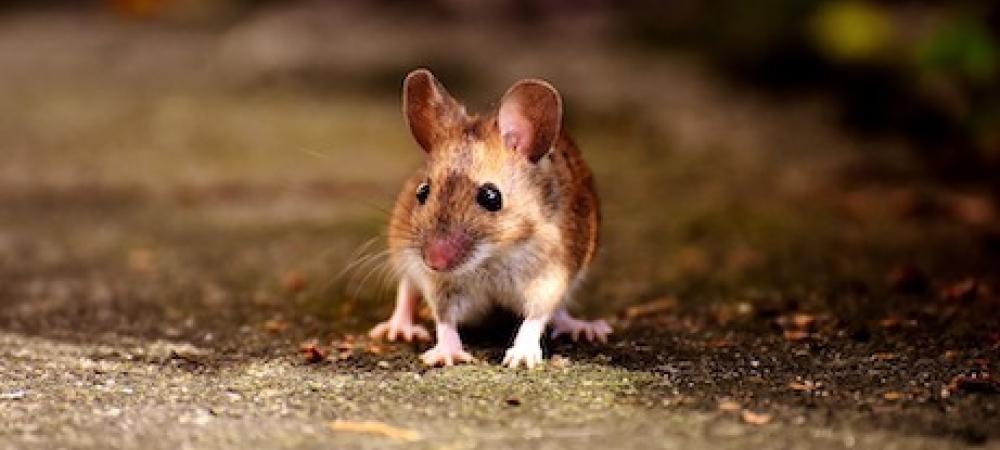What Attracts Mice And How Can You Prevent Them?

Mice, with their small size and nimble movements, can find their way into homes seeking food, shelter, and warmth. Understanding the factors that attract mice and implementing preventative measures is crucial for maintaining a rodent-free living space. In this detailed blog post, we'll explore what makes your home enticing to mice and provide practical tips to keep these unwelcome visitors at bay.
What Attracts Mice to Your Home?
Like most pests, mice are attracted to residential houses because they offer a safe, warm place to live with easy access to water and food. Let's break that down further:
Warmth and Shelter
Homes provide a cozy and sheltered environment, especially during colder seasons. Mice seek refuge from harsh weather conditions and predators, making attics, basements, wall voids, and crawl spaces appealing nesting sites.
Water Sources
Mice, like all creatures, need water for survival. Leaky pipes, condensation, and even pet water bowls can serve as water sources that attract mice.
Access to Food Sources
Mice are attracted to homes primarily by the promise of readily available food. Crumbs, spilled food, open pantry items, and even pet food left out in the open are irresistible to these rodents.
What Food Attracts Mice?
Mice are attracted to a variety of foods, and their preferences can vary based on factors such as their natural habitat, environmental conditions, and individual taste. Here are some of the favorite foods:
- Seeds and Grains: Mice are naturally drawn to seeds and grains. This includes sunflower seeds, pumpkin seeds, oats, barley, and various types of cereals. These foods are rich in carbohydrates and are a staple in the diet of wild mice.
- Peanut Butter: The scent and taste of peanut butter are highly attractive to mice. Smearing a small amount of peanut butter on a trap or bait station can be an effective way to lure them.
- Chocolate: Mice have a sweet tooth, and chocolate is known to be appealing to them. Chocolate can be used as a bait, but it's important to use small amounts to avoid potential harm.
- Nuts: Nuts, such as almonds, walnuts, and hazelnuts, are enticing to mice. These high-energy foods are often sought after by mice in their natural habitats.
- Dried Fruits: Mice are attracted to the sweetness of dried fruits like raisins, apricots, and cranberries. These can be used as bait or added to traps.
- Cheese: While the idea of mice being attracted to cheese is widespread, it's not always the most effective bait. Mice do enjoy cheese, but they may prefer more high-energy foods.
- Cereal and Granola: Dry cereals and granola, especially those with a high sugar content, can be attractive to mice. They may nibble on these foods if available.
- Meat and Protein Sources: Mice have a natural inclination towards protein-rich foods. Bacon, bits of cooked meat, or even pet food can serve as effective baits.
- Birdseed: If you have bird feeders in your vicinity, spilled birdseed can attract mice. They are known to forage for seeds, making birdseed a potential lure.
If you are using food to attract mice for control purposes, it's important to keep safety in mind. If using traps or bait stations, follow guidelines carefully to avoid harm to non-target animals and ensure the safety of pets and humans. Additionally, consider consulting with pest control company for effective and humane methods of addressing mouse-related issues.
How to Prevent Mice in Your Home
To help you prevent rodents from infestation your home, here are some easy things you can do to keep mice from nesting in your house:
Seal Entry Points
Mice can squeeze through tiny openings and gaps, gaining entry into your home. Holes in walls, gaps around windows and doors, and openings for utility lines are common entry points. Thoroughly inspect your home for any gaps, cracks, or holes that mice could use to enter. Seal these entry points using caulk, weather stripping, or steel wool.
Proper Food Storage
Store food in airtight containers to minimize the availability of food sources for mice. Keep pantry items securely sealed, and avoid leaving crumbs or spills unattended. Pet food should also be stored in sealed containers with tight-fitting lids.
Regular Cleaning
Maintain a clean living environment by regularly cleaning and sweeping floors. This includes wiping off countertops and cleaning all dirty dishes. Vacuuming areas where crumbs may accumulate is essential. Dispose of trash promptly and keep trash cans sealed.
Fixing Leaking Pipes
Leaking pipes provide a convenient water source for mice, and addressing plumbing issues is crucial in rodent prevention. Regularly inspect your home for leaks, and promptly fix any dripping faucets or pipes. Ensure that areas prone to condensation are well-ventilated to reduce moisture, as this discourages rodent activity.
Manage Outdoor Areas
Overgrown vegetation, clutter around the exterior, and hiding spots near the foundation create convenient pathways and hiding spots for mice. Trim vegetation around the exterior of your home to eliminate safe spots for rodents. Keep firewood, compost piles, and other potential shelters away from the house. A well-maintained outdoor space discourages mice from approaching.
Professional Rodent Control
Consider enlisting the help of professional pest control services. Regular inspections and preventive treatments can help keep mice and other rodents at bay. Professionals can also provide advice on potential vulnerabilities in your home.
If you are dealing with a mouse infestation and live in Greater Venice, FL, it's time to call Venice Pest Control. Our team of exterminators are about to identify common signs of mice, help you properly dispose of mouse droppings, set you effective rodent bait stations, and work with you to complete rodent exclusion repairs. Contact our team of local experts today!
FAQ About Preventing Mice
These frequently asked questions shed light on the dietary habits of mice, offering insights into what they eat, their preferences, and how to effectively use baits in pest control efforts.
Do Mice Eat Cheese?
Contrary to the popular belief perpetuated in cartoons, mice do have a fondness for cheese, but it's not necessarily a dietary staple for them. Mice are more attracted to high-energy foods like seeds, grains, and protein sources. While they may nibble on cheese if available, it's not their primary dietary preference.
What Do House Mice Eat?
House mice, being opportunistic omnivores, have adaptable diets that vary based on their surroundings. In homes, they often consume grains, seeds, and cereals found in pantries. They are also known to eat crumbs, pet food, and even food scraps. House mice have a wide-ranging diet, making them resourceful in urban and suburban environments.
Can Mice Eat Fruits and Vegetables?
Yes, mice can eat fruits and vegetables. In the wild, they consume a variety of plant-based foods to complement their diet. Pet mice, in particular, benefit from the nutritional value of fresh fruits and vegetables. However, it's important to introduce these foods in moderation to prevent digestive issues.
What Is the Best Bait for Mouse Traps?
Effective baits for mouse traps include high-energy foods that mice find irresistible. Peanut butter, seeds, nuts, and bits of cooked meat are popular choices. The strong scent and palatability of these baits make them attractive to mice, increasing the chances of successful trapping.
How Much Water Do Mice Need?
Mice, like all living creatures, require water for survival. They usually obtain water from the food they eat, but it's essential to provide them with a fresh and clean water source. Ensure that pet mice have access to a water bottle to stay hydrated, as dehydration can lead to health issues.
What Do Mice Commonly Use for Nesting Material?
Mice are resourceful nest builders, and they use a variety of materials to create cozy and hidden spaces for their nests. Common nesting materials include soft, fibrous substances such as shredded paper, fabric, insulation, leaves, and even bits of cardboard. Additionally, mice may gather feathers, fur, or other soft materials to line their nests, providing insulation and comfort for their offspring. Understanding their nesting preferences can help in identifying potential nesting sites in and around your home.
